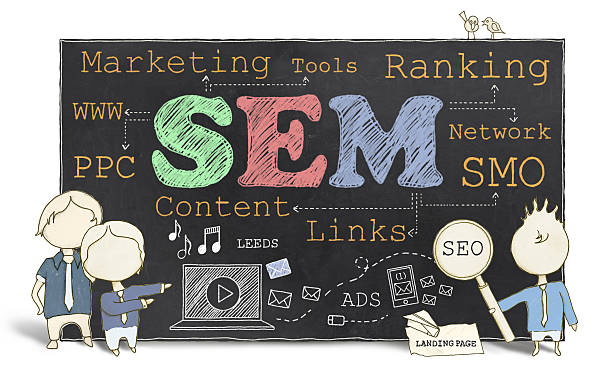Digital marketing target ads are highly effective, as they allow businesses to reach specific audiences through tailored strategies based on interests, demographics, behavior, and location. This article will delve into what these ads are, how they function, and their vital role in business success.
What Are Digital Marketing Target Ads?
Digital marketing target ads are a form of advertising where businesses aim to reach a specific audience using digital platforms. Users’ characteristics and behaviors are used to create personalized ads; this makes the content more relevant to them. Social media platforms, search engines, websites, and other digital channels frequently deliver these ads to users.
Targeted ads utilize various data like browsing history, search queries, location, interests, and past purchases to decide which users see specific ads, such as a clothing brand displaying winter coat ads to users searching for winter gear.
How Do Digital Marketing Target Ads Work?
Digital marketing target ads rely on data to make decisions about who should see an ad. This is where several targeting methods come into play:
Demographic Targeting: This involves segmenting audiences based on characteristics such as age, gender, income level, education, and marital status. For example, a luxury car brand might target high-income individuals, while a children’s toy company may focus on parents.
Behavioral Targeting: Users’ online behaviors can be tracked by advertisers to determine their interest in specific products. This includes actions such as clicking on links, watching videos, or making purchases. Businesses can create a more personalized experience by using data to show ads to users interested in similar products.
Contextual Targeting: Contextual targeting focuses on showing ads based on the content the user is viewing. A user reading a blog post about fitness may be shown ads for gym memberships, fitness equipment, or supplements. This method ensures that the ad content aligns with the user’s current interest.
Geographic Targeting: Geographic or location-based targeting helps businesses deliver ads to users based on their location. For example, a restaurant can target users who are within a specific radius of its physical location. Marketers can send ads to users as they enter specific areas using features like geofencing for more precise location targeting.
Psychographic Targeting: Users are the focus of this method, with their lifestyles, interests, and values being taken into account. It uses data such as hobbies, preferences, and even personality traits to display more relevant ads. Eco-conscious consumers can be shown ads for sustainable products.
Retargeting and Remarketing: The business targets users with ads who have previously interacted with it but have not completed a purchase, such as visiting its website or adding items to their shopping cart. (The business is the one doing the targeting in this active voice version.) By reminding users of what they’ve shown interest in, marketers can increase conversion rates.
Why Are Digital Marketing Target Ads Important?
Increased Relevance: The primary advantage of digital marketing target ads is that they ensure the right message reaches the right person. A user is more likely to engage with content when ads are tailored to match their interests. For example, a user searching for travel destinations is more likely to click on an ad for flights or hotel deals than a generic ad that’s not relevant to their current needs.
Improved ROI: Targeted ads are a cost-effective way of reaching an audience that is more likely to convert. By focusing on users who have a higher probability of engaging with the ad, businesses can reduce wasted ad spend. Each ad dollar is spent more efficiently, resulting in a higher return on investment (ROI).
Better User Experience: Users find relevance in ads that align with their interests, reducing the likelihood of frustration. This creates a positive feedback loop where users are more likely to engage with the content, increasing the chances of conversions, sign-ups, or purchases. Personalized ads also help improve the overall user experience across digital platforms.
Optimized Campaigns: Digital marketing target ads offer the ability to track the performance of specific campaigns in real time. Advertisers can measure key metrics such as impressions, clicks, and conversions. With this data, they can optimize campaigns by adjusting their targeting, ad creatives, and budget allocation to improve results.
Higher Engagement: Targeted ads often result in better engagement because the content resonates more with the audience. For example, Facebook’s detailed targeting features allow businesses to create highly specific audiences based on interests and behaviors, making it more likely that users will interact with the ad, like it, comment on it, or share it with their network.
Increased Brand Awareness: Even if users don’t immediately make a purchase, digital marketing target ads increase brand awareness by keeping the business in the user’s mind. Repeated exposure to well-targeted ads can help build brand recognition and trust over time, leading to higher long-term conversion rates.
Popular Platforms for Digital Marketing Target Ads
Several digital platforms provide robust targeting options for marketers. Some of the most popular include:
Google Ads: Google offers an array of targeting features, such as demographic targeting, keyword targeting, geographic targeting, and remarketing. Google’s search engine and network help businesses reach users at various buying stages.
Facebook and Instagram Ads: These platforms offer highly detailed targeting based on user interests, behaviors, location, and demographics. Facebook also allows businesses to upload customer lists for custom audience targeting, which is especially useful for retargeting.
LinkedIn Ads: For B2B businesses, LinkedIn provides an excellent platform for targeting decision-makers based on job title, industry, company size, and professional interests. This makes LinkedIn particularly valuable for companies targeting other businesses or professionals.
Twitter Ads: Twitter’s ad platform allows for targeting based on interests, keywords, and demographics. Twitter is ideal for brands looking to engage with users around trending topics or specific events.
YouTube Ads: Video ads on YouTube can be targeted by demographics, interests, location, and even by specific channels or videos, making it a powerful tool for businesses looking to engage visually with their target audience.
Conclusion
Digital marketing target ads are a cornerstone of modern advertising. Targeted advertising helps businesses engage ideal customers effectively by delivering personalized content, driving conversions, and maximizing ROI. Through demographic targeting, behavioral analysis, and remarketing, businesses can connect with the right audience amidst evolving digital marketing landscapes, ensuring a significant impact in a competitive marketplace.





